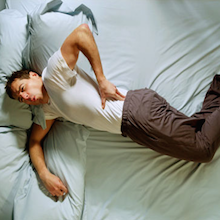As we celebrate the 100th Anniversary of Occupational Therapy (OT), a trip through time shows the roles and benefits of OT evolving to meet the needs of patients through historical changes. In its conception, Occupational Therapy used meaningful and purposeful activities to improve the cognitive state of patients in mental institutions. As WWI soldiers returned home with life-changing injuries, Occupational Therapists engaged those patients in woodworking and ceramic tasks, then advancing to training in new jobs tasks. Soldiers worked to gain talents in agriculture, woodworking, and even piano tuning in order to remain productive in society. In the 1930’s when the prevalence of polio, cerebral palsy, and pediatric disabilities increased, Occupational Therapists found a role in helping those children improve their ability to engage in school tasks and ultimately were instrumental in children with disabilities integrating into the public school system. At Walter Reed Army Hospital (as it was referred to in the 1950’s), Occupational Therapists worked with the rehabilitation of soldiers receiving prosthetics. In the 1970’s, Occupational Therapists collaborated with NASA to advance the technology for human prosthetics and robotic limbs used in space missions. And as we go into the 21st Century, Occupational Therapists are researching and developing new and novel therapies to assist veterans in coping with the realities of modern warfare and its aftereffects.
The benefits of Occupational Therapy are driven by the needs of our patients and the evolving culture of healthcare. OT is a profession within the rehabilitation field that uses meaningful and purposeful activity to help individuals with an injury or disability to gain (or regain) independent life skills. We work in a variety of settings and are skilled in the evaluation and treatment of both cognitive and physical limitations and their application to life activities.
Here at ProFlex Physical Therapy, our OT’s treat patients with a physical injury or disability to the upper extremity. During our evaluation, we establish what limitations the patient has in their life activities and determine the underlying cause. Is the patient unable to type on their computer at work? Are they unable to change the diaper or prepare a bottle for their infant child? Does the patient have trouble fastening the buttons of their clothing or trouble managing utensils when out in public? Is a patient who loves playing guitar now having difficulty? We then custom design a treatment plan designed to help patients return to those meaningful activities. We can utilize exercises, craft or play activities, manual techniques, and modalities such as heat or ultrasound to improve the patient’s deficits.
Because Occupational Therapy is a patient-centered focused therapy, patients see benefits as they relate to their day to day lives. The patient given adaptive tools is now able to fasten the buttons on their shirt or use a knife safely while at a restaurant. The guitar playing patient has been given exercises to strengthen weak muscles in their hand and can now play some of their favorite songs. The parent of the young infant learns strategies to complete diaper changes with a broken thumb immobilized by a cast. The office worker now has custom designed supportive splints to wear at work along with an ergonomic workspace allowing them to type with less pain.
So if you find yourself coming through the doors at ProFlex Physical Therapy, our Occupational Therapists will be happy to listen to your needs, limitations, and goals, and work with you to develop a focused patient-centered treatment plan. Our goal is for you to benefit, to the fullest extent possible, from this rewarding therapy.



